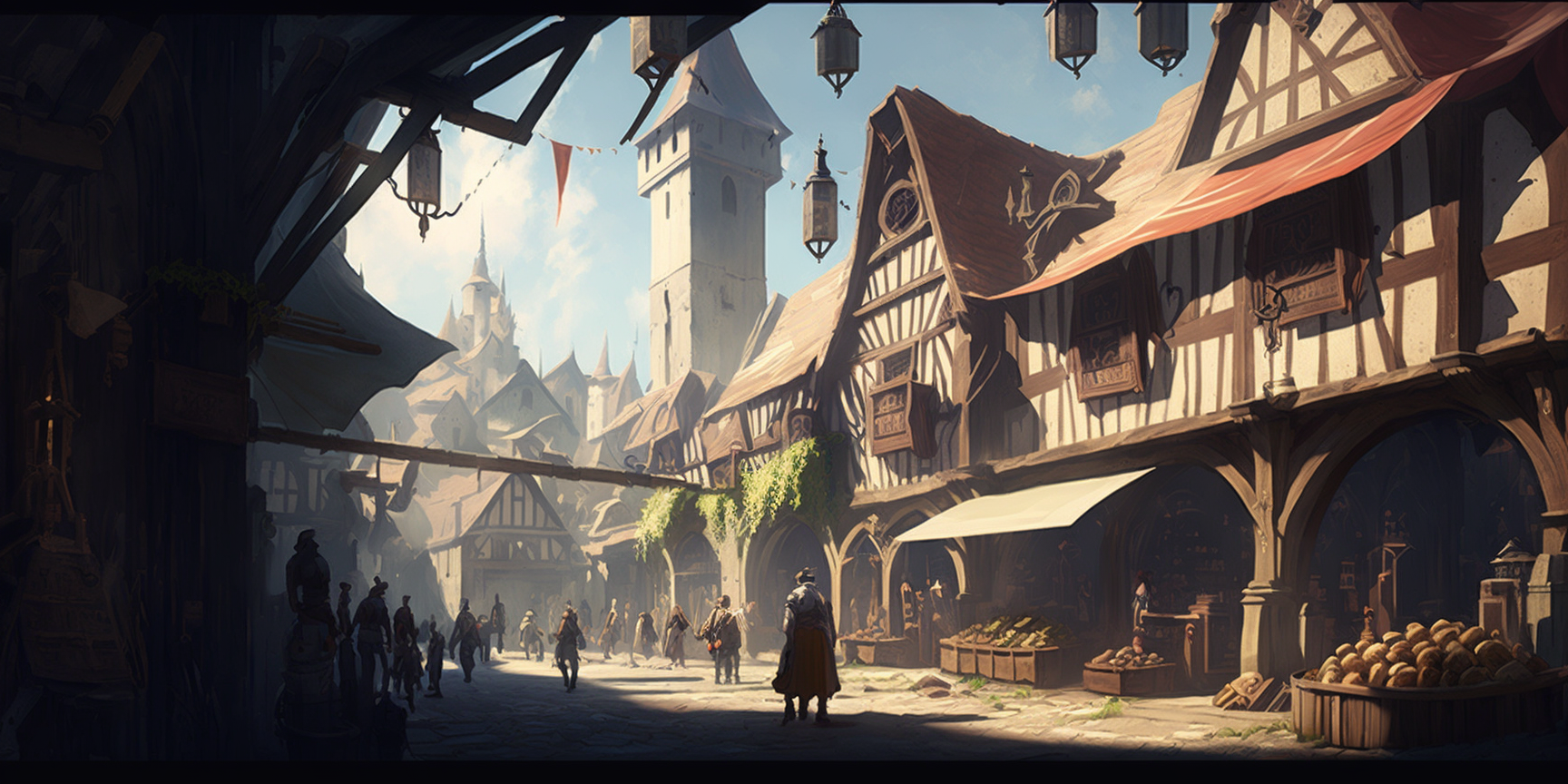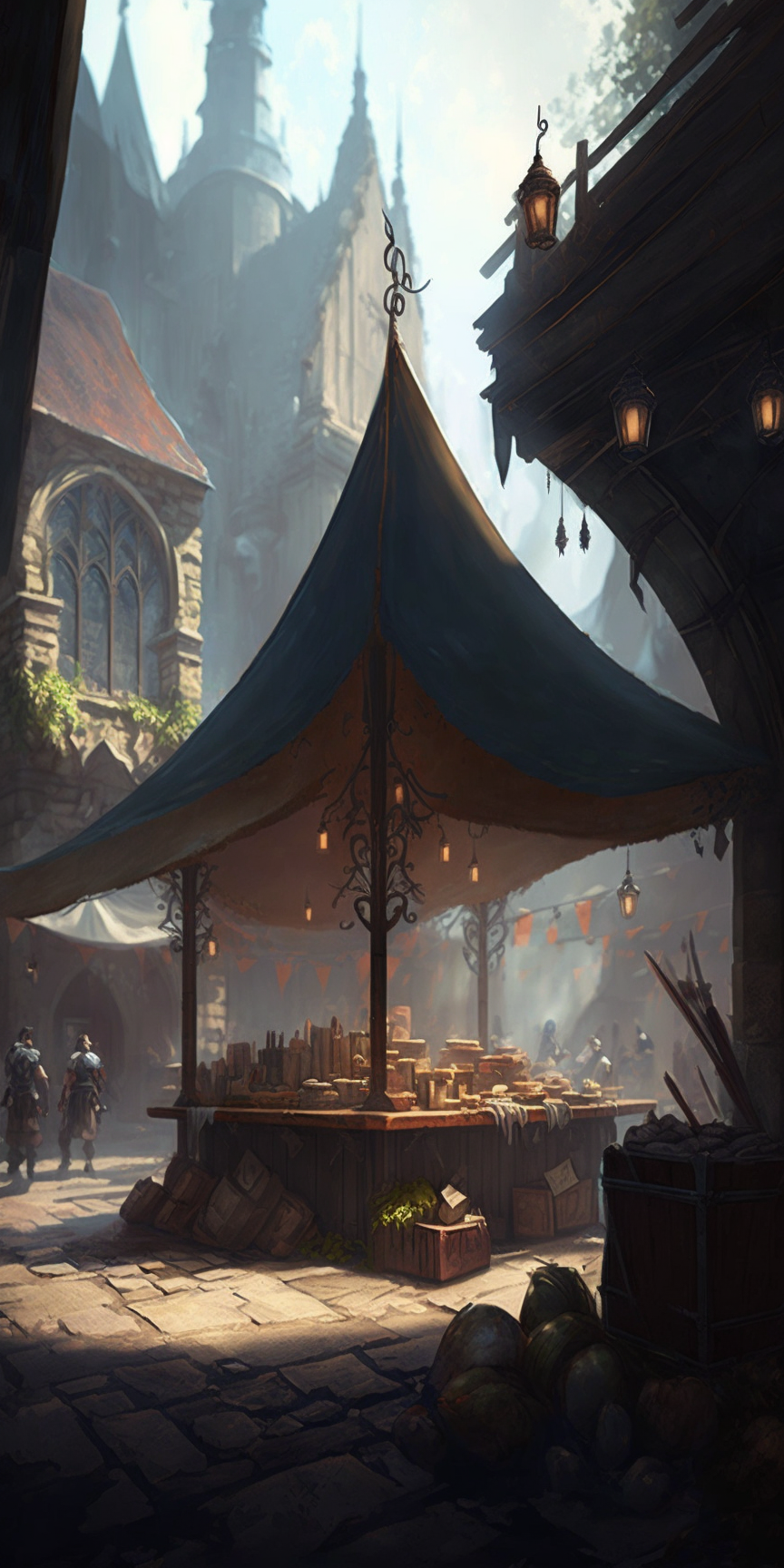The Town
Introduction
Market towns, communes, boroughs, burgs or simply, "towns" were initially created out of necessity during the early middle ages. A town is not just an overgrown village. It has its own economy. Goods are made and traded there. So a good site might be on a bend in a navigable river, or beside a river crossing. Many of the first towns to arise in the British Isles and France were in fact built in the locations of abandoned roman villas were in some cases had strong roman walls protecting them. The Villagers were drawn to them in times where brigands and gone-wild nobles would often raid and sack their villages.
Towns vs Cities
City status in England and Wales was traditionally given to towns with cathedrals and in some cases castles. Apart from this distinction, in France and Italy, population or economic power also contributed to the renaming of a town to a City.
Market
Towns soon enough became places of gathering for the surrounding villages and churches were built in order to serve the religious needs of the surrounding small villages. The first instances of markets and trade in towns happened during Sunday markets, where the villagers would come to the town on Sunday to go to church and after that they would sell their surplus there. With the passing of years, markets became too big for the churche's lawn and soon markets were hosted in the town center, by the 15th century, churches will in fact ban markets around them.
Industry
It was these markets that gave rise for the first time to craftsmen, where they would buy the this surplus and create the first signs of industry in the towns. Tanneries and leatherworking, Smiths, Weavers and all sorts of craftsmen soon filled these town and created a new class of wealthier urbanised freemen.
Security and Storage
Walled towns dotted the British Isles, Italy, Spain and France in the Middle Ages. Some dated back to Roman days. Crumbling Roman town walls were shored up in the warring between Saxon and Dane and most French Nobles and Italian states. The charter of Worcester reveals the thinking behind them. A successful market town would generate revenue and pay for its own defence.
In Oxford, specific houses were called mural houses, as they were rent-free or tax-free in return for repairing the town wall. Whereas in Chester, the reeve used to call out one man to come from each hide in the county to repair the city wall and bridge.
Fears of invasion, uprising and civil war made town walls seem a necessary security throughout the medieval period, though in times of peace they could be neglected. The Crown sometimes had to chivvy boroughs to maintain town walls, towers and gates. The expense was heavy, particularly where new walls were needed to incorporate an expanding town. So boroughs could seek royal permission to collect a tax called murage especially for work on town walls.
Economy & Taxes
Towns might have started as a defensive measure but they soon became centers of economy, trade and industry transformed them and made those that succeeded fiercely competitive with each other but also co-dependant. The lucrative centers soon drew the attention of the ruling class that tried their best to control them. Town soon required a charter to operate that needed to be paid once or as an annual contribution to the King, Bustling long distant trade also meant that there was a requirement for infrastructure, roads, canals, guard posts to protect trade also meant, tolls that the traders will need to pay. In port towns custom houses were created to make sure that the King would take taxes of some exported goods, wool was commonly taxed by the kings and queens of England when exported. Most towns also taxed merchants coming into the town to trade, initially this was a portion of their traded goods but later on it became coins. The need to transfer wealth also gave rise to financial services, money lenders, tax collectors, goldsmiths with vaults started to store valuables, and of course Banks, which thrived in Italy (Medici the Bankers of European Royalty) and later on across the Mediterranean due to Knights Templars service of issuing paper deeds that can be exchanged in a different location for gold.
Governance
Rulership
In the early middle ages, after the collapse of the Roman Empire, towns and the first cities were governed by the local Count, Duke or Religious authority of the Castle or Cathedral (Temple) that owned the lands around the town. In many cases some of the most successful cities became completely self-governed, forming their own councils or electing their own leaders like a Lord-Mayor, or a Doge. The Italian City-states, the Imperial Cities of the Holy Roman empire and the cities of the Hanseatic Trade League are great examples of thriving, self governed entities, which in some cases did not even declared fealty to a King.
Management
Cities soon became big enough to require an array of specialist ot manage their finance, maintenance, growth and defense, creating new professions of urbanised population that will dramatically change the population of kingdoms and create strong political and financial cores. The council of the city would collect taxes and in turn use those taxes to maintain its infrastructure and invest into growing the city's capabilities and prestige. Cleaning the streets, Repairing the walls and streets, collecting taxes, protecting the inhabitants and the city gave rise to a new type of freeman that had no connection to the land and lived and died in service of a great economic machine.





Good article. First line under Management to has been spelt ot. Also, not sure at that time, for a town to become a city at least under British rule it needed to have a decree by the monarch.
The rules about the change from town to city have changes time a many in England, it did start with the presence of a Cathedral, York got it for a Castle and so did Edinburgh nowdays is actually population only
World Anvil Founder & Chief Grease Monkey
Twitter | World Anvil Changelog
“No act of kindness, no matter how small, is ever wasted.” - Aesop